LOIS Belveal Blockhan
Idaho’s special Hat Lady
YOUTH Dynamics
God and adventures
AWE
For God
His creation amazes

HAYLEY Slaughter
Her life-saving donation






Idaho’s special Hat Lady
God and adventures
His creation amazes

Her life-saving donation






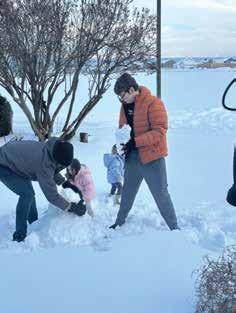

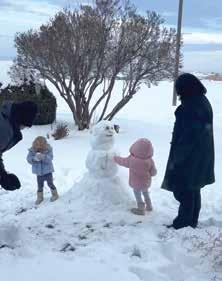
 By Sandy Jones
By Sandy Jones
I’m so ready for spring! For those of us living in Southern Idaho this has been such a mild winter that it’s almost unnerving. In January we had Snowmageddon Part Deux. Here at our home we received a whopping 13” of the fluffy white stuff in two-and-ahalf days! Outside of some really cold windy days, that was pretty much our winter.
We loved those few days of snow. Our two-and-a-half year old twin granddaughters came to visit. For the first time in their little lives they got to play in the snow, and build a snowman with their Daddy and their cousins! I laughed as one of the little girls came in to warm up and told her Mommy “they’re makin’ a mess!”
Isn’t that true in life though? Sometimes you have to make a mess to make something beautiful.
Romans 8:28 has been my stronghold for the past ten years.
And we know that all things work together for good to them that love God, to them who are the called according to his purpose.
Does this mean that all things will be good, fun, or easy? Certainly not. What it does mean is that if we stay true to following our Lord and Savior that at some point we will see that He has used our journey, our triumphs, as well as our struggles, for His good.
All too often we want to interpret Scripture to be all about us, and sometimes that is true, but my experience with this particular Scripture has been God showing up in the good times in life, as well as the bad, and how He can use anything for His good. And to quote a missionary friend of ours, “what could be more important than that?”
God loves us completely, even when we’re unlovable by man’s definition.
He forgives us when we don’t deserve it.
He carries us when the load is too heavy to carry alone.
He rejoices with us when we have cause to celebrate.
He blesses us with miracles too many to count.
Most importantly, He sent His one and only Son, Jesus, to be our role model, and then Jesus took the sin of the entire world –my sin – your sin – everyone’s sin to the cross that we might have eternal life with Him. We celebrate this miracle each spring at Easter, one of my favorite holidays.



I know I’m a great sinner, and I’m so not worthy of this blessing, and, yet, He offers it freely. How could I not want to love, trust and serve Him? Even when it’s messy.
In my last column I shared that my husband, Steve had been diagnosed with stage IV metastatic lung cancer. This has not been an easy season in our lives… BUT GOD!
But God has shown up every step of the way.
He showed up in late January when Steve was suddenly struck by a saddle pulmonary embolism that blocked the airways to both lungs, causing him to spend 3 days in ICU.
He showed up again a week later as Steve was readmitted to the hospital with an acute UTI, and as we were wrestling with some pretty big decisions and Steve’s own urologist happened to be the doctor called in to consult. The doctor knew immediately how to treat Steve, and what works with the way his body is designed.

It’s so easy for me to sit here today and write about all the times God has shown up, and blessed us with another mighty miracle in the dark, thick of things, but today I’m sitting here challenging myself to recognize the everyday miracles in the good times.
All the answered prayers. Not just the prayers for healing and peace. How about the prayers for provision?
Many of us take for granted the fact that we have well-stocked pantries.
And yet, when I stop and think about it – God is the only reason my pantry is well-stocked.


Or the fact that a friend worked hard and lost 40 pounds two years ago and blessed me with much of her wardrobe. The fact of the matter is that at the time we didn’t have the money for me to buy clothes, and yet God provided. The other day I got to thinking about it – and was amazed when I realized that I’m still wearing so many of those things as everyday clothes. They’re not frayed, they’re not worn out, and they’re still great clothes. It reminded me of the Israelites in the desert, when their clothes didn’t wear out. Yet it’s been so easy for me to take these articles of clothing for granted, and not recognize the miracle they’ve been.
Yes, my husband has a serious illness, but through it I’ve been blessed with a fresh new perspective. One of gratitude. One where we praise God in the storm.
With this in mind, I simply must ask, how has God blessed you today?
Until next time…
God Bless! n
I know I say it each and every issue of Christian Living Magazine. Please frequent and support our advertisers. Like you they love The Lord, and because they love The Lord they support this ministry so that we can continue to bring you the hope and promise of God’s love, grace and mercy.


Many people will never darken the doors of a church because they think they’ve done things that are too horrible for God to forgive. Scripture is clear that nothing is further from the truth. The death of Jesus on the cross was a sacrifice that paid for all sins. Not some. Not most. All.
A story Jesus tells in the 15th chapter of Luke is often called the Parable of the Prodigal Son, and it’s a story that addresses many aspects of life on earth. It starts out with a man who has two sons. The younger son was eager for independence, so he asked his father for his share of the inheritance. Surprisingly, the father gave his younger son half of the value of his estate, and thinking he had it made, the younger son set off for a distant country for what he thought would be a life free from obligations.

Jesus said the young man indulged in a life of excess and recklessness, squandering his wealth in wild living. However, a severe famine came along, but because the young man had spent all his money, he found himself destitute and desperate. To survive, he took a humiliating job feeding pigs.
The young man’s conditions were so bad he even considered eating what he was feeding the pigs. Eventually, the young man hit rock bottom and came to his senses. He knew he had already received his inheritance, but he realized his father’s servants were better off than he was. He decided to return to his father and beg that his father let him work as a hired servant.
As the son approached his father’s property, his father saw him from a distance and was filled with both joy and compassion. He ran to his son, embraced him, and kissed him. The son confessed his sins and humbly asked for forgiveness.
However, before he could even finish making his request, the father ordered his servants to bring the finest robe, a ring, and sandals for his son. He also commanded them to prepare a feast to celebrate his return, declaring, “For this son of mine was dead and is alive again; he was lost and is found.”
The father was clearly overjoyed, but the older son heard what was going on and became angry. After all, why should the younger son be treated so well when it was the older son who remained faithful and obedient to his father?
Thinking his younger brother did not deserve the treatment he was getting, the older son refused to join the celebration. In fact, he pointed out all the sins his brother had committed as reasons for why his return should not be celebrated.
The father answered, saying, “My son, you are always with me and everything I have is yours.

But we had to celebrate and be glad because this brother of yours was dead and is alive again; he was lost and is found.”
At its core, this parable illustrates the boundless mercy and forgiveness of God. The father’s response to his wayward son’s return is representative of God’s unconditional love for every person on earth, no matter how far each may stray. Despite the younger son’s foolishness, recklessness, and wasteful extravagance to have fleeting sinful pleasures, the father eagerly welcomed him back with open arms.
This characteristic of God is also explained in a similar parable, the Parable of the Lost Sheep (also in Luke 15), in which Jesus says, “[T]here will be more joy in heaven over one sinner who repents than over ninety-nine righteous persons who need no repentance.”
As I mentioned earlier, many people will never darken the doors of a church because they think they’ve done things that are too horrible for God to forgive. This parable of the prodigal son illustrates the ripple effects of repentance. God does not wag his finger at us. He welcomes people with open arms if they will only turn to Him. It’s never too late to do so, and there will be much rejoicing in the heavens, too.

However, this parable also shows that even people who appear righteous and obedient can harbor sinful resentment and selfrighteousness, things that Jesus warned us about. Hidden sins of the heart can severely hinder our ability to love others as Jesus would have us love them.
The parable of the prodigal son illustrates the transformative power of repentance and redemption. It shows us the need for humility, even in those who outwardly appear faithful but inwardly may harbor unseen sins. But it also shows us that God stands ready to welcome us back with open arms, eager to forgive and restore us to wholeness.
Whether you’re a non-believer or someone who’s been walking with the Lord for decades, it wouldn’t hurt to humble yourself before the Lord and ask that He clean you up and bless you. Repentance on earth brings rejoicing in God’s kingdom, no matter who you are or what you’ve done. n
Daniel Bobinski, Th.D., is an award-winning and best-selling author and a popular speaker at conferences and retreats. Reach him at danielbobinski@protonmail.com or (208) 375-7606.

The 2024 Caldwell Spring Prayer Walk marks the event's 20th anniversary. This year, the walk will be held on Saturday, April 13, beginning at 3 p.m. in Caldwell Memorial Park.
The event is held annually to pray for the city of Caldwell and its citizens, including the following: the police, paramedics, firemen, the mayor and city council members, health care workers, colleges and schools, students, teachers, administrative staff, bus drivers, for a day care center for the homeless, for food insecure families, for human trafficking victims, for graffiti to go away, for gang members to come to accept and know Jesus in their lives, that violence and illegal drugs will go away, for safety in the community, and for businesses to continue to do well.



Walk organizer Arlene Robinett stated the walk is family friendly, for people of all ages, and all are welcome. “Anyone who doesn't want to walk may stay at the park bandshell and pray,” Robinett said. “A potluck dinner will follow the walk and those who attend are invited to bring a favorite dish to share.”
Caldwell's mayor, Jarom Wagoner, had this to say about the annual event: “The City of Caldwell is grateful for Arlene Robinett and her dedication to not only begin the Caldwell Prayer Walk, but to continue it for two decades now. As the mayor of Caldwell, and an active participant with my family in the prayer walk, it is truly a blessing to gather so many people of different faiths to walk through and pray for our community. The blessings are real, and we look forward to this continuing for many more years.”
For more information, contact Robinett at (208) 391-8516. n












Ahh, the springtime! New life all around us. Flowers blooming, birds singing, trees showing their new leaves.
But have you taken time to be in awe?
In our culture we seem to find ourselves busily running here and there. Get this done! Hurry there! Get ready, we are going to be late! Hurrying off to work, speeding home to get to evening activities, awakening early on Saturday to get the kids off to their sports or other events; carving out time, maybe, on Sunday to get to church.
We are sometimes so busy we cannot stop to reflect, to think, to consider. We easily lose our AWE. What exactly is awe? I think of a small child seeing a beautiful butterfly taking off from the flower in the yard. Totally focused, immersed in the beauty of that event, eyes opened wide in surprise, mouth agape, appreciating the novelty, the wonder. You notice the excited emotions and hear the laughter from the child experiencing the awe.

Springtime can be, and should be, a time of wonder. In our northern tier we see the dead come alive. Dormant trees sprout their leaves, flowers burst up from the ground, grass turns green, birds build their nests.
Did you ever wonder how a bird knows how to build a nest? How do they, while the wind is blowing, carry a single straw to the angle in the tree branch and keep it there while they go and get another and another? Soon a perfect nest is built, starting from a single straw.
In Africa, where I lived for a time in the past, there are weaver birds. They create amazing nests in the bush. They lay their eggs in these nests to hatch at the exact time for the very food that the newborns need. For their next stage, the food needed for that “magically” appears. It is such an amazing coordination I am not sure how you can look at that and not marvel at creation.
Matthew 6:26: Look at the birds of the air; they do not sow or reap or store away in barns, and yet your heavenly Father feeds them. Are you not much more valuable than they?
Matthew 6:28-29: And why do you worry about clothes? See how the flowers of the field grow. They do not labor or spin. Yet I tell you that not even Solomon in all his splendor was dressed like one of these.
I spent a couple of my college years in cancer research. I was looking into one enzyme that controlled the production of protein. In fact, it turned off the gene when there was enough protein made. How did it know that? The more I studied and examined the process of protein synthesis (the cells making proteins) the more in awe I was at the amazing complexity. The deeper I looked the more complex it seemed, all the way down to the atomic level.
There is a concept in Creation Science called “irreducible complexity.” This basically means that it does not become more simplified the deeper we look into something, but in fact it remains complicated, and in some ways, more complicated. As we seek to understand nature, the more we seem to not know, and the more in awe we become.
I have spent my career studying the brain. My brain cannot understand the complexity of my own brain. During my medical school years, the neuroanatomy professor was detailing some of the connections in the brain, trying to explain something so very complex. He let it slip that “it was created with these complex feedback mechanisms…” The front row was where most of the few Christians in my class sat. We looked at each other: “What did he say?” “I think he said ‘created!’.” We decided amongst ourselves that two of us would
go and talk to him about that. He willingly talked to the guys who went there. He told them he could not understand how this could have evolved; it is just so complex. He was told about the Creator and at least listened. Even an atheistic professor found himself in awe of God’s creation.
When you stop to consider, sometimes it is overwhelming in a good way. In our gross anatomy class, we had a group of six of us working with a donated body to learn anatomy and function. I was so taken by the amazing human body that I wrote on the chalkboard we used for taking notes and making diagrams Psalms 139:14: I praise you because I am fearfully and wonderfully made; your works are wonderful, I know that full well.
I figured the next day it would be gone, erased when the janitor cleaned the boards. However, the next day and the next it was still there. After a few weeks the janitor took time to retrace the letters so it stood out from the fading. It lasted all year. We were awed by the complexity and wonder of what we were seeing. Many students had the opportunity to come to the Lord during that first year of medical school because we were in awe of the amazing things we were learning.
Amazing. Wonderful. Extraordinary.
So, how do we keep our awe, or even maybe get it back? Stop, slow down! You are moving too fast! Give yourself time to breathe, take in the wonder around you. Sit in the park for a moment. Watch the birds landing on the lake or in the trees. Take a hike in the forest. But don’t just take a walk, observe. Learn something about nature. Take time to look at the bugs or ants and watch what they are doing.
Some time ago, I found a book called, “Have You Considered: Evidence Beyond a Reasonable Doubt” by Julie Von Vett and Bruce Malone. I recommend this as a way to stimulate your awe. It is hard to put down once you start reading it.
As we consider some of the awesome things around us, it should point us to an awesome God who did amazing things. He created all this for us. However, something went wrong in the beginning when sin entered the world. This awesome, loving God had to do something so that we as sinful, imperfect beings could live with Him in an awesome place called Heaven. He sent Jesus, who had to suffer for us on the cross, paying for our sins, our shortcomings, and then being raised from the dead in the awesome resurrection that gives us hope for the future and takes away the sting of death.
1 Corinthians 15:54-57: When the perishable has been clothed with the imperishable, and the mortal with immortality, then the saying that is written will come true: “Death has been swallowed up in victory.”
“Where, O death, is your victory?
Where, O death, is your sting?”
The sting of death is sin, and the power of sin is the law. But thanks be to God! He gives us the victory through our Lord Jesus Christ.
Let’s keep our awe for our awesome God! n
Dr. Larry Banta is an author of several books, a retired psychiatrist, and a former missionary. He served in India, Mexico and Kenya. He and his wife, Evelyn, a counselor, travel together to provide consultation and training in various international locations.







Professor Stanley Hauerwas wrote the following: “We never know whom we marry; we just think we do. Or even if we first marry the right person, just give it a while and he or she will change. For marriage, being [the enormous thing it is] means we are not the same person after we have entered it. The primary problem…learning how to love and care for the stranger to whom you find yourself married.”
Hauerwas’s realism rings true to people who have been married for a long time. Marriage changes us. Having children changes us. A career switch changes us. Age changes us. On top of everything else, marriage brings out and reveals traits in you that were there all along but were hidden from everyone including you, but now they are all seen by your spouse.
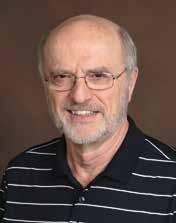
Most people enter marriage through the “in-love” experience, and at its peak it is euphoric. Two people can become almost obsessed with each other. Dr. Gary Chapman argues that the in-love phase, which he believes usually lasts several months to two years, includes the illusion that the beloved is perfect in every aspect that matters.
Dr. Chapman goes on to say that we are not totally naïve. We know intellectually that we will eventually have differences. But we are certain that…we will [quickly] reach agreement. We are caught up in the beauty and charm of the other’s personality. Our love is the most wonderful thing we have ever experienced. We observe that some married couples seem to have lost that feeling but it will never happen to us. “Maybe they didn’t have the real thing,” we reason.
The in-love experience passes when the flaws in the other person come home to us. Things that seemed small and inconsequential now loom large. We begin to feel that we did not really know the person after all. And this presents us with the challenge of loving a person who, at the moment, seems in large part a stranger, not the person you remember marrying.
When this happens, people respond in a number of different ways. If your purpose in marriage was to acquire a “soulmate” – a person who would not change you and would supportively help you reach your life goals – then this particular reality of marriage will be deeply disorienting. You wake up to the realization that your marriage
will take a huge investment of time just to make it work. Just as distressing will be the discovery that your spouse finds you a stranger and has begun to confront you with a list of your serious shortcomings. Your first response will be to tell yourself you made a bad choice and failed to find someone truly compatible.
What if, however, you began your marriage understanding its purpose as spiritual friendship for the journey to the new creation? What if you expected marriage to be about helping each other grow out of your sins and flaws into the new self God is creating? Then you will actually be expecting the “stranger” seasons, and when you come to one you will roll up your sleeves and get to work.
What are the “tools” for this work? How can we engage one another in spiritual friendship to help us on our journey toward our future selves? How do we love each other so that our marriage goes on from strength to strength rather than stalling out in repetitive arguments that end in fruitless silence? According to the late Timothy Keller, the basic answer is that you must speak the truth in love with the power of God’s grace.
Ephesians 4:15 reads, “Speaking the truth in love, we will in all things grow up into him who is the Head, that is, Christ.”
That statement sounds platitudinous, until we break it down. As a divine institution, marriage has several inherent powers that we must accept and use – the power of truth, the power of love, and the power of grace. As we use each power in the life of our spouse, we will help him or her grow into a person who not only reflects the character of Christ but who also can love us and help us in the same way. These three powers will do their best work in us during times when we find it hard to love the semi-stranger to whom we are married. n
Gary Moore served as associate pastor at Cloverdale Church of God for 15 years. He does couples’ coaching and leads couples’ workshops and retreats called MUM’s the Word. He has a weekly radio program – Life Point Plus – on KBXL 94.1FM at 8:45 a.m. on Fridays. His website at www.mutualunderstanding. net has video teachings and other resources for couples. He may be contacted at glmoore113@gmail.com.









I’m excited to introduce myself to Christian Living Magazine readers and to my new column, Nutrition Nook. My first career was as a registered dietitian. While I’m now a Christian author and speaker, once a dietitian always a dietitian! I love helping my family and friends eat healthy and take care of their God-given bodies.
I muse that sometimes we take better care of our cars, which we hope will last a few years, than we care for our bodies, which we expect to last a lifetime. We would never fill up a gasoline engine car with diesel or vegetable oil, yet we often indiscriminately fill up our bodies with junk.
“Why do you spend your money on junk food, your hard-earned cash on cotton candy?

Listen to me, listen well: Eat only the best, fill yourself with only the finest. Pay attention, come close now, listen carefully to my life-giving, life-nourishing words.” (Isaiah 55:2, The Message)
My plan is to make Nutrition Nook interesting, fun, motivational, and informative, along with sharing a recipe favorite with you each time. Since we’re now a couple months into the New Year, some of you might’ve started 2024 with goals to lose weight and get into better physical shape. Maybe you even joined a gym. I hope you’re still eating well and exercising, but you might not be as enthusiastic as you were back in January.
My hubby and I live in the mountains of Idaho. Our winters are long, icy, and snowy. So we joined a local gym. We stay consistent by having a schedule. Monday, Wednesday, Friday at 4 p.m., you’ll usually find us at the gym. We like going in the late afternoon because my writing day is over and often we have the gym to ourselves. Others prefer starting their day with exercise. Whatever days, times, and form of exercise work best for you, develop a routine and schedule it on your calendar. An accountability workout partner helps too and is fun. When the weather improves, I like to take walks on the days we’re not at the gym.
I’m reading the Bible in a year, or I should say listening to the Bible this year. I make my workouts enjoyable by listening to an audio Bible on my ear pods. If you, like many, have trouble finding time to sit down and read the Bible, listening to it helps your workout or exercise go faster while improving your spiritual health.
Now to tackle what we eat!
You’ve probably noticed this phenomenon on social media. A friend posts selfies looking fabulous after losing weight, as they joyously grin with their achieved success. Everyone congratulates her or him. “Oohs and ahhhs” fill the comments. But as suddenly as the pictures appeared, months go by with no pictures. Then you see a picture and your heart sinks … at least my dietitian’s heart sinks. They’ve gained all the weight back, and maybe more!
Or we see celebrities go up and down in weight over the years as they try, or even endorse, different diet plans.
What happened? Why wouldn’t everyone want to maintain his or her amazing weight loss? Why wouldn’t they want to stay trim and healthy? Why wouldn’t they want to enjoy wearing all those beautiful new smaller size clothes they bought? Maybe I’m talking to you.
The answer is usually the same – they were on a weight loss regime they couldn’t possibly maintain for life. Fast and noticeable weight loss was the immediate goal, without a long-term maintenance plan to keep the weight off.
Maybe they eliminated food groups, ate extremely low calories or ready-prepared boxed or frozen meals, drank shakes, endured shots, swallowed pills, or even underwent surgery. Does any of that sound familiar? Anxious for a quick fix, many resort to something drastic to get fast results, but they couldn’t eat like that for a lifetime. Once they reached the weight goal, or ran out of money for
the costly shots or products, slowly, maybe quickly, the natural tendency is to return to familiar eating habits.
Weight loss without a realistic lifetime eating plan is doomed to failure. God designed our body to operate best on the food He created, in the quantities that maintain optimal health. When we try to circumvent His plan for good nutrition by going on a crash diet … we crash too.
I recently saw a friend who had lost weight and I commented how great she looked. She said her goal was to be thin for her high school reunion. Her main concern now was keeping the weight off for the next two months until the reunion. And with those words, I knew that once the reunion was over, she would regress to her past eating patterns and soon the lost weight would return. Unconsciously, she was acknowledging it wouldn’t just be difficult to maintain her weight for two months, but impossible beyond that. I commented that the first time I met her she was on a diet, and her reply was like so many, maybe even you, “I’m always on a diet.”
The only successful “diet” is when the goal is healthy eating for a lifetime, not weight loss for the moment. Here’s the problem with all the fads, diets, programs, regimes … they’re meant for immediate gratification of experiencing dramatic change because that’s our world today. Slow and steady doesn’t give us the immediate satisfaction we crave. That’s why quick-fix “miracle” ads are so attractive. Have you tried any of these below?
• The 10-day Weight-Loss Program
• How to Reach Your Desired Weight in a Month While Eating All You Want
• Lose Up to 10 Pounds in a Week
Or here’s one I recently saw: “‘Secret Method to Getting Slim Fast.’ I’ve been drinking this miracle drink for 3 weeks now. My friends won’t stop asking how I became so thin in such a short amount of time. I’ve become half the size I once was!”
Even though it’s human nature to want quick results, people who lose weight gradually and steadily – about 1 to 2 pounds per week – are more successful at keeping the weight off. Healthy weight loss isn’t a diet, program, or gimmick. It’s developing a doable lifestyle of healthy eating patterns and some form of exercise.
Once you have achieved a desirable weight by relying on healthful eating and physical activity, you’re much more likely to be successful at keeping the weight off over the long term.
Losing weight isn’t easy. It takes commitment, but it’s so achievable. That’s the good news!
Here’s the secret revealed: There’s NO secret miracle way to get slim fast and keep it off.
Everyone acknowledges, and few try to defy, how God created gravity – stepping off a cliff = downward plunge. But many have spent thousands of dollars trying to defy the way God created our bodies: calories in minus calories expended = our weight. It’s not a secret and it can’t be miraculously circumvented. But millions of people buy into a lie that it’s possible.
Energy (calories) IN and energy OUT = maintained weight
More IN than OUT = weight gain
More OUT than IN = weight loss
To lose weight, we have to use up more calories than we take in through metabolism and exercise. One pound equals 3,500 calories. Reduce caloric intake by 500-1,000 calories per day to lose about 1 to 2 pounds per week. That safe weight loss won’t throw our body into shock or deprive us of necessary minerals and vitamins if we’re eating a balanced diet.
Life-heart change is the only way to maintain weight change.
“I have learned the secret of living in every situation, whether it is with a full stomach or empty, with plenty or little. For I can do everything through Christ, who gives me strength.” (Philippians 4:12-13)
Identify:
1. Why you want to lose weight?
2. Why you eat?
3. When you eat?
4. What are you eating now that’s contributing to your excess weight? Then set realistic maintainable and healthy goals:
1. One- to two-pound loss a week
2. Exercise 30 to 60 minutes most days
3. Learn how to choose and prepare healthy food
4. Reduce portion sizes and eat three meals a day
5. Track what you’re eating
A balanced diet means eating a selection from five food groups in portion sizes that help lose or maintain weight without sacrificing health. The colorful www.myplate.gov website provides good information on how to determine your caloric requirement, food groups, portion sizes, and so much more for the whole family.
To be successful at long-term weight loss, we must adopt a new lifestyle, just like when we became Christians and we put off the old way of life and put on the new. The new healthy you will make changes to adopt and embrace healthy eating habits, be more physically active, and learn how to change eating behaviors and habits.
“Therefore, if anyone is in Christ, the new creation has come: The old has gone, the new is here!” (2 Corinthians 5:17)
Next column, we’ll talk about reading labels. Here’s a healthy, tasty recipe to kick off your new eating plan. It’s easy, yummy, and a good way to use up leftover rotisserie chicken. n
12 oz. can chicken or rotisserie chicken chopped
2 eggs beaten
1/2 cup shredded mozzarella or cheddar cheese
Lightly salt, pepper, seasoning of your choice
Optional: add 1/3 cup chopped cooked broccoli, onions, chilies, or other veggie
Mix and portion into a silicone tart or muffin pan or use olive oil spray lightly on regular pan if you don’t have silicone. Cook at 350° for 15 minutes in tart pan or 20 minutes in muffin pan. Makes 9 muffin size and 12 tart size. Serve with BBQ sauce, dipping sauce, or ranch dressing
Janet Thompson, award-winning Christian speaker, freelance author, and author of 20 books, is also the founder, director, and God’s servant of Woman to Woman Mentoring Ministry and About His Work Ministries. Her passion and focus is mentoring the next generation. Her tag line is, “Sharing Life Experiences and God’s Faithfulness.” She has a BS in Food Administration, MBA, and Master of Arts in Christian Leadership. Check out her books and sign up for her free weekly online blog and monthly newsletter at womantowomanmentoring.com. Join her on www.facebook.com/ Janetthompson.authorspeaker, LinkedIn, Pinterest, X, and Instagram.







Reminiscent of Laura Ingalls Wilder and her hardscrabble “Little House on the Prairie” life, Lois Belveal Blockhan also grew up on a prairie. “We had no electricity, no running water, no telephone. And we hiked three miles every day to our little one-room schoolhouse; it didn’t matter if it was raining or snowing,” she remembered. “If it was really stormy, then my dad would haul us in a covered sleigh.”
It was the late 1930s. In remote North Dakota. And Lois was the second oldest of seven children. But hers was far from the idyllic life Laura Ingalls Wilder led in the “Little House” books and television series.
The children occasionally stayed overnight with their grandparents, who lived several miles away. For most of the kids, it meant an evening of fun and entertainment. But for Lois, it meant her grandfather would be taking her alone into a room and sexually abusing her. Again. “It began when I was about five, and continued until I was ten,” she said. “But I never reported it. He bribed me and threatened me, so I never said anything. Plus, in those days, children were told to keep quiet” – following the 15th century English proverb, “Children should be seen, but not heard.”
What’s more, her own father was an alcoholic. “He’d drink as often as he could – which was quite often. Beer, hard liquor, it didn’t matter. He’d buy booze and hide it, but we knew what he was doing.”
So Lois left home at age seventeen, took a three-day train trip to Mount Vernon, Washington, and moved in with her sister.
And first, life was good. But then, likely because of the trauma she had suffered at home, Lois began drinking. Not heavily. Just a drink here and there with her young friends.
And she found love. Or so she thought. The man she married turned out to be “a controller,” as she put it. “In his eyes, I could never do anything right. I couldn’t think for myself; I couldn’t express myself. I had to explain to him how I spent every dollar he made.” And he was abusive; often viciously beating and kicking her.
The couple met several times with their church pastor to discuss their strained relationship. “But I was afraid to tell the truth to our pastor – or to anybody,” Lois admitted. The reason? Her husband was a well-known and well-liked local firefighter; he had friends in the police department and friends at city hall. She figured no one would believe he was an abuser. The couple even met with a marriage counselor. “But the counselor said my husband didn’t have any problems – that I was the problem. So it got to the point where I was being blamed for all the difficulties we were having,” she said.
Eventually divorcing, Lois lived in Boise for a short time – after attending another sister’s Boise wedding – then moved to the San Francisco Bay Area. Again, life was good. In fact, much better than before. She became a very successful licensed realtor, selling highend homes and properties in ritzy neighborhoods.
But the pressures of both the high-stress job and of raising three children on her own began to take their toll. And her drinking accelerated. “I could out-drink most of the people I went out with – clients, business associates and the like,” she recalled. What’s more, her flexible working hours as a realtor only exacerbated what was quickly becoming a serious alcohol problem. “I’d start drinking about three in the afternoon and would drink about a gallon of wine a day!” she said. “Pretty soon, I was at the end of myself. I was often so spaced out, I could hardly leave my home. I couldn’t work because my drinking was interrupting everything.”
Finally, a friend recommended she enter an Alcoholics Anonymous program. So she did. “I remember, in one group discussion, the instructor told us even those with very emotional mental disorders can get well – if they chose. And that, to become sober, you must choose to become sober and choose to be honest with yourself. I looked around the room at the others and wondered, Which of those people is he talking about? Well, it wasn’t long before I realized one of the people he was talking about was me!”
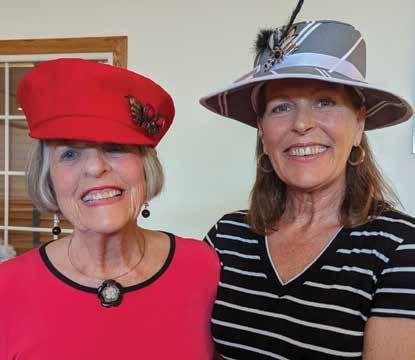
A few weeks later, she attended an AA-sponsored Women’s Bible Study – a meeting that changed her life forever. “I got saved October 20th, 1977! God got a hold of me and completely turned me around!” she exclaimed. “Right away, God told me who He was. And right away, I started attending four Bible studies a week.”
But coming to know the Lord didn’t come without its challenges. “Shortly after I was saved, I was attending an Assembly of God church service, when the Lord told me to give quite a large amount of money, some $10,000. I knew, if I gave Him that money, I would only have about $3,000 left in my bank account. So I really struggled with that. To me, it was a test of faith. But it was the first time I had really heard from the Lord, so I gave the money. I was really connected to doing what was right.”
Her faith grew even stronger over the next decade. Then, in 1988, the Lord spoke to her again. “I got a prophecy in which the Lord told me, ‘Move to your hometown.’ I asked, ‘But where’s my hometown, Lord? I’m not moving back to North Dakota, because it’s too cold there.’ I had been to Boise before, so I decided to make Boise my hometown because most of my relatives already lived there.”
It became a fortunate move for Lois in two ways: first, because that’s where she eventually met and married John Belveal, a fellow Christian. “He was a great guy. So sweet. We got along so well together,” she fondly recalled.
And secondly, John Belveal was a hat salesman – and Lois made hats. “In 1999, God had given me the idea to start making my own hats. I have a very small head, so I could never find hats that fit me; ones I wore always felt like somebody else’s hat,” she said. So she gathered up some material, sat down at her sewing machine, and went to work. Together, John and Lois joined his marketing expertise with her creative drive and the two began selling her hats at expos, farmers’ markets, county fairs and, thanks to her website, all over the world. “I’ve even sold hats in Russia,” she pointed out. They made and sold hundreds of hats every year: specialty hats, Easter hats, summer hats. Hats with flowers. Hats with bows. Hats with lace and netting. Hats with big brims, hats with small brims. All original designs. And all with materials she’d find at second-hand stores, warehouses, and fabric outlets.
In fact, her hats became so popular, Lois soon became known in many circles as “The Hat Lady.”
Making hats not only provided a side income, it also became her ministry. “It opened doors. People would come up to me and say, ‘Oh, I really like your hat!’ – treating me like we had been friends for years. In the course of the conversation, I’d tell them ‘God gave me this hat business.’ And it went from there,” she explained.
Lois has also donated hats to the St. Luke’s Mountain States Tumor Institute in Boise and its cancer patients who, due to chemotherapy treatments, have lost their hair.
John passed away in August, 2018, after the two enjoyed fourteen years of blissful marriage. And although Lois was devastated, the Lord comforted her – soon bringing another man into her life, another strong Christian, a cowboy-hat-and-boots-wearing Cowboys for Christ traveling rodeo chaplain named Pete Blockhan. They were married on April 21st, 2021.

Lois feels Isaiah 43:18-21 best epitomizes her life, her faith, and her ministry. The Lord’s words read in part, “Forget the former things; do not dwell on the past. See, I am doing a new thing! … I provide water in the wilderness and streams in the wasteland, to give drink to my people, my chosen, the people I formed for myself that they may proclaim my praise.”
Today, at age 90, Lois has slowed down a bit. She doesn’t market her hats as aggressively as she used to – “I still sell some, I still give some away,” she said – and she and Pete have curtailed many of their rodeo circuit trips. But they stay busy. Pete works as a carpenter and maintenance man at the church they attend, the New Life

Celebration Church of God in Emmett, and Lois can often be found seated at her sewing machine in the 14- x 16-foot design studio her husband built for her, making yet another hat. And hoping to minister to someone in need who crosses her path. She also shares her testimony in front of various women’s groups, luncheons, and church gatherings. “I’ve titled my talks ‘From Victim to Victory,’” she said. “I not only tell my story, but I teach people the practical applications of the Word of God. We’re responsible for what we do, the decisions we make. It’s like a fenced yard: you open the gate and let the good in, and open the gate to let the bad out. It’s a matter of self-control – and God’s control. If you say, ‘I can do this, Lord, with your help,’ He’ll open the door.”
Looking back over her many years, Lois stated, “You know, God had his eye on me from the day I was born. When I was five, six, seven years old, I’d go to a church service and hear the message. Afterwards, I would be happy and cheered up. At the time, I didn’t understand why.
“Now I do.”
You can check out Lois’s hat website at www.hatstoyou.us. n Steve Bertel is a multi-award-winning professional radio, television, print media, and social media journalist, who retired after a 30-year broadcasting career. Now a busy freelance writer, he recently released his debut suspense novel “Dolphins of an Unjust Sea,” available on both Amazon and Kindle. Steve and his wife of 41 years live in Meridian, Idaho. He can be reached at stevebertel65@gmail.com







 By Gaye Bunderson
By Gaye Bunderson
From the age of 8, Hayley Slaughter wanted to do something that no other child in the world ever likely wanted to do: give away one of her organs. “I’ve always wanted to be a kidney donor,” the now 35-year-old said.
She started early on in life seeking to give parts of herself away, beginning with a desire to make a bone marrow donation to help people suffering with leukemia or lymphoma. “I started donating blood at 15; and at 18, I got on the bone marrow and live tissue registry. I thought I might be called for a kidney,” she explained.
That didn’t happen the way she thought.
What she didn’t know back then was that her desire had been planted in her heart by a Someone she didn’t know at the time, for the purpose of helping someone who wasn’t even sick yet.
The young woman who now lives in Mountain Home was born and raised in Albany, Ore. Regarding her faith back then, Slaughter said, “I believed in God, but I didn’t have a strong relationship with Him.”
That all changed when she worked as a certified nursing assistant in home care and hospice settings. It was a hospice patient who originally got her to open up her spirit. “The last client I saw, I witnessed her faith in God, and I saw how beautiful that could be – she had no fear in death.”
When Slaughter started going to church, she got very involved through music. “I went to the Nazarene Church and started playing flute, and that’s when I really started getting into church and getting involved. I was the preschool director, director of the blood drives and the clothing drives.”
She attended the Mountain Home church with her family: her husband Travis and their three young children. The music made her feel closer to God. But then...
She explained: “I’m a strong-willed person, and I want things my way; but I felt God was telling us to leave that church, where we had been for 10 years.”
The “known” provided her with comfort. God wanted her to grow through the “unknown.”
“I was scared. I was starting over. I was losing the music,” she said. Nevertheless, she and Travis made the decision to attend The Rock, a church in Mountain Home, after trying another church that didn’t feel right to them.
There was music at The Rock, and people there were attempting to form a band. But Slaughter’s schedule didn’t fit anyone else’s. She admits that losing the music made her feel downcast.
“I was sulky about it and asking, ‘Why, God?’.”
She realized that at the same time, she was getting something from the sermons. The kids were growing up well. There were positives.
In March of 2022, Slaughter happened to read an article in Woman’s Day Magazine about a national project called DOVE, or Donor Outreach for Veterans, all about donating kidneys to veterans. Travis is a veteran and served 20 years in the U.S. Air Force.
“I contacted DOVE immediately,” she said. It was to be the connection she’d waited for since her registry days, and even before that.
She did an intake phone interview with Sharyn Kreitzer, founder of DOVE. The process of being a kidney donor began at last.
She soon filled out an online health questionnaire and spoke over the phone with a transplant nurse in Hackensack, N.J. She’d come up as a match with someone in the database who needed a kidney. But after the initial elation, medical staff rejected her because her mother has diabetes and she has PCOS (polycystic ovary syndrome).
“I was heartbroken. I had very intensely wanted to do this. I definitely felt God wanted me to do this,” Slaughter said.
Then, in record time, Kreitzer referred her to Walter Reed National Military Medical Center in Bethesda, Md. She once again filled out a questionnaire, and she addressed the medical issues in her and her mother. “I wanted them to know I’m healthy. I have a good body mass index, I do martial arts, and I’m careful about my diet. I wanted to tell them, ‘Please, look at me as a person’.”
Though she had discussions with Walter Reed, she remained in Mountain Home. She was continually assaulted by doubts about being selected as a kidney donor. “I was feeling they were going to reject me. I felt the defeat, and I was just crushed.”

She had spoken with donors in the past, but prior to the transplant she was able to speak over the phone with the soon-tobe recipient of her kidney, a 40-something female military veteran named Candice, who suffered with FSGS, or focal segmental glomerulosclerosis kidney disease.
“She told me what the donation meant to her.” That conversation meant a lot to Slaughter.
Slaughter said the Bible verse that inspired her the most through everything was Matthew 25:40 – “The King will reply, ‘Truly I tell you, whatever you did for one of the least of these brothers and sisters of mine, you did for me.’”
She saw herself undergoing the surgery as much for the Lord as for the recipient. The surgery saved the woman’s life. There was the proof that God put the desire to be a kidney donor in Slaughter’s heart way back in childhood, and brought it to fulfillment years later. The donation took place on June 23, 2022.
Slaughter and Candice met prior to surgery and the women established a warm connection. “She was in the OR next to me; and when my kidney was taken out, they walked it over to her.”
Almost everyone possesses two kidneys, though a small percentage of people are only born with one. One of Slaughter’s two healthy kidneys was removed and surgically implanted in Candice to replace her diseased kidney. Despite all possible adverse outcomes, the transfer went smoothly.
Little did she realize that that moment was not the beginning of the end but the beginning of the culmination of an 8-year-old’s longtime goal.
Following the sense of absolute despair, Slaughter said, “That’s when I handed control over to God and said, ‘Thy will be done’.”
At this point, even if He decided she was not going to be a donor, she would endeavor to accept His will. Slaughter mentions a book she’d read titled, “Anything: The Prayer That Unlocked My God and My Soul” by Christian author Jennie Allen. It has become a favorite of hers; she prayed the special prayer mentioned in the book: to essentially relinquish all control to God.
Soon, her despair led her to victory. “I realized that I hadn’t made God number one in my life. I wanted what I wanted instead of asking, ‘What does God want?’ I surrendered control and prayed, ‘Help me to accept the outcome,’ because I knew I would be crushed if I couldn’t be a kidney donor.”
Six weeks after her initial contact with DOVE, she donated a kidney, a process that most generally takes 3-5 months. “When I heard I’d been accepted, I yelled to my family, ‘They are going to let me be a donor!’ And I was screaming.”
Prior to her hospitalization at Walter Reed, she was required to undergo a series of tests, some of which she was able to do locally, including blood, urine, and glucose tests. She then went to Walter Reed for the remaining tests before being cleared and later flying back for the surgery.
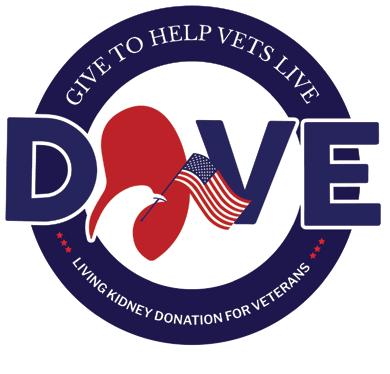
Slaughter’s husband traveled the donor journey all along with his wife. She always had his support, and he flew with her to Bethesda. “In the days after the surgery, Travis and I walked six miles all over Washington, D.C. The month I donated, prior to the surgery, I got my purple belt in taekwondo; eight months after I donated, I got my brown stripe belt.”
The woman who wanted to be treated like a person – and a healthy one at that – had demonstrated just how well she truly was and is. She now serves as a mentor to other donors, and the November 22 issue of Woman’s Day ran a feature specifically on her. She also received the Idaho Spirit of Freedom Award, which is presented to individuals in only two categories: veterans and volunteers who assist veterans.
“I use all this to share and inspire at least one person,” Slaughter said. She wants all readers to know that March 14 is World Kidney Day. Though just a few people chided her for taking the risk of being a kidney donor, and in doing so potentially leaving her children motherless, most were supportive, and Slaughter hopes everyone will see the value in kidney donation.
Of her family she said, “We pray, we tithe, we try to be an example.”
Slaughter herself is a great example. “God blessed me with two kidneys, and I only needed one,” she said. Because of that, a woman who served her country remains alive and healthy today. n For more information, go to DoveTransplant.org.
 By Gaye Bunderson
By Gaye Bunderson
Think nature. Think whitewater, hiking, scenery, and wildlife. Now, think about God.
That’s the goal of an organization called Youth Dynamics: fuse the outdoors with thoughts about the Creator and what He might mean to your life.
Brandon Burie is a marketing coordinator and staff member with Youth Dynamics in southern and west central Idaho. The non-profit was founded in 1970 in Washington state and launched in the Gem State in 2006, with an Adventures Base in Horseshoe Bend.
“We operate primarily two different styles of locations,” Burie explained. “Adventures Bases are where the trips run out of and we have four: Idaho (Horseshoe Bend and Grangeville); Washington (Plain); and Oregon (Canby). A program called Communities Ministry happens throughout the three states in 14 current locations. Idaho locations are Horseshoe Bend, Riggins, and now Emmett. This is where the after school drop-in programs such as Connect and Discover Groups happen. Horseshoe Bend is unique in that it is both an Adventures Base and a Communities Ministry site.”
Whatever the location and program, the emphases are always young people and adventure.
“We’re primarily an outreach ministry,” Burie stated. “We assume students don’t know about Christ. We try to use meaningful relationships and impactful adventure to connect young people with Him. We set an example of, ‘We love you; we love Christ. It doesn’t matter where you’re at – believer or unbeliever – we’re here to welcome you’.”
Just exactly what that adventure looks like might vary from base to base; but in Horseshoe Bend, 27.4 miles from Boise, participants do a lot of rock climbing, river rafting, kayaking, and single-day hikes. A 7- to 8-day Owyhee River excursion is also offered.
Whether a single- or multi-day event, the day starts with a devotion, followed by a 20- to 30-minute quiet time; during the evening, adventurers discuss the highs and lows of the day, and all participants are asked, “How did you experience God today?”
No one is put on the spot and, in fact, according to Burie, one recent conversation went like this: “One student had a spiritual hard heart, but he loved the adventures. Eventually, he softened his heart just a little and opened up to the possibility of a higher power. When
we’d ask people, ‘How did you experience God today?’, he’d say, ‘I don’t believe in God so I’m not going to answer’. But he’s started to show signs of coming around.”
Another student comes to everything, Burie said – all the events. She calls her parents “toxic Christians” and is “very resistant to faith,” he said. She did nonetheless accept a Bible on one occasion.
The ministry process is about setting an example, acting and serving with love, and sharing – when the opportunity arises – what God has done in each YD staff members’ life.
Many youths respond to the process quickly. “For some, it just takes a moment for them to accept the Lord,” Burie said. And late last year, one student was baptized during a service at a Horseshoe Bend church.
A side benefit of the adventures is their lower cost. Burie explained: “A 6-day Lower Salmon River raft trip can cost upwards of $1,500$2,000. We offer it at far less – about $400 – and we have a scholarship fund.”
Youth Dynamics also provides the technical gear for everything. Each base is equipped with the essential tools needed for youth to explore nature, including food, equipment, training, and insurance. “With the different landscapes offered by each location, each trip is unique and provides its own special opportunities and blessings,” Burie said.
Burie said of his exploring-adventure ministry, after a very stormy trip on the Owyhee that left participants drenched for days: “There is more to adventure than simply consuming an experience. When in dynamic environments, we must be active participants. The experience leaves us with both highs and lows. Mixed in are moments or challenges that are hard and need to be processed.
“We leave adventures as changed people, bonded with those we adventured with and a better understanding of ourselves. When we make Christ a focal point of the experience, we grow closer to Him, just like we did our companions.”
There is a 6-person team at the Horseshoe Bend base, as well as 4-6 seasonal staff. When hiking and other warm weather activities are curtailed by seasonal changes, a ministry to students is still available through such events as indoor games and other programs that help students make connections – hence the name Connect.
Youth Dynamics wants to deepen the ministry and grow and expand. The organization wants to connect youth with local churches, and there is a need for more Discover Groups, as mentioned above. According to Burie: “Discover Groups are programs we would like to see restarted soon, as students grow and staff resources grow. The goal of Discover Groups is to go a little deeper with students who are taking steps in their faith and have established a relationship with Youth Dynamics staff. This would be space for students to wrestle with the complexities of the gospel and how it interacts with their life, as well as have room for more honest and vulnerable relationships.”
The non-profit is also always looking for more volunteers and more people to fill staff positions. “There’s a million ways to get involved,” Burie stated. “Financial partnerships are also necessary.”
Other facets of Youth Dynamics are its leadership program for young people. This is a “6-week internship opportunity for young adults ages 16-19 to work closely with stateside missionaries who use wilderness adventures to share the love of Christ. Students experience discipleship, adventure, challenge, and leadership. The program runs from July 5-August 14 each year and students may experience inflatable kayaking, whitewater rafting, rock climbing, horseback riding, backpacking, hiking, a challenge course, and mountaineering, depending on base location.” (Information taken from yd.org. To learn more about YD Adventures Idaho, go to https://yd.org/adventures/idaho/.)
Following are a few comments from young people who have participated in the leadership program. (Comments provided, without names, by Garrett Koepke, Staffing Manager-Idaho, Youth Dynamics.)
• “I grew in the ability to relate to the Bible, and not be scared at this big historical book, find and define myself in Christ, and figure out my faith alongside and share it with others.”
• “I learned that God is a big enough God to handle the hard questions, the angry cries, and the questions of unbelief.”
• “I was really challenged to know why I believe what I do, and to have grace and understanding when people share a different view.”
Another facet is working with area church youth groups to provide outdoor, faith-based experiences. Said Burie: “Our staff will assist churches in building a custom-facilitated experience for your group that will best meet your goals, whether it is team building, leadership development, discipleship, ‘owning your faith’, creating trust within the group, or helping young people to find their personal identity in Christ.”
At age 25, Burie has been involved in the Christian adventure experience since 2018, working with an outfitter in Colorado and with church youth groups. He ended up in Idaho after applying for an internship in Washington during the pandemic in 2020 and being told there were no internships there, but “Idaho can take you.” Along with being the marketing coordinator in Horseshoe Bend, he is also a guide and facilitator and in that capacity goes on all YD adventures with other staff and young people.
He grew up in church, specifically the Dutch Reformed Church in Michigan, where he lived with his family. “That’s the way it was there. The three priorities were work, family, church. That was the cultural norm.”
He currently attends Hill City Church in Boise’s North End after taking the church’s youth group on a rock climbing event.
Burie said the most important thing about what he does now – and what Youth Dynamics is all about – is the emphasis on meaningful relationships and impactful adventures, as stated. “The ultimate goal,” he said, “is to see students have a lifelong adventure with Christ and His Church.” n
Burie may be reached by email at bburie@yd.org or by cell at (616) 414-0640.














“We often take for granted the very things that most deserve our gratitude.” – Cynthia Ozick
My friend Shielda was diagnosed with Amyotrophic Lateral Sclerosis (ALS), more commonly known as Lou Gehrig’s disease. Shielda had worked at a school with special-needs kids for eight years and loved being able to help them learn and grow.
By the way, Lou Gehrig’s disease (or ALS) is what my mother passed away from at the age of forty-six and my paternal grandmother at the age of fifty-four. For those unfamiliar with the disease, it basically holds its victims prisoner in a body in which the nerves slowly die, causing the muscles to stop functioning as well. Their minds are alert, but their bodies gradually shut down.

I would usually visit Shielda on Tuesdays, which was interesting to later hear of the book, “Tuesdays with Morrie,” by Mitch Albom (2002), who shares his experiences visiting his friend who also has ALS. On one of my visits, I had mentioned to Shielda about a video project I was doing about keeping our perspective on what matters most in life and she was happy to be part of it. Her ability to speak had been gone for a while, so after I would ask the question, she would type her answer into her keyboard, one finger at a time. Then our friend Jacque would read her answers aloud.
During the interview, when I asked her what she missed most about losing her physical abilities, she said, “I miss being able to get up and go to work every day. When I hear Danny [her son] and Randy [her husband] getting up in the morning, taking their showers to get ready for school and work, I wish I could get up and go to work, too. I also miss being able to do things around my home for my family— cooking, cleaning, polishing floors, and doing special things for them—things I know they like.” She went on to say, “When I hear teachers say, ‘I can’t wait for
spring break,’ I want to yell, ‘I’ll take your place!’” Her tears flowed, and ours followed.
The inspiration from Shielda’s life, along with so many others, serves as ongoing powerful reminders of the difference perspective can make in our lives.
As was poignantly illustrated by Shielda, one of the greatest opportunities for transforming our thinking is when we realize what a blessing it is to WORK.
This one perspective absolutely transforms any person or organization that chooses to fully embrace it: “I Get To!”® … go to work!
“There are only two ways to look at life…one is as if nothing is a miracle from God, and the other is that everything is a miracle from God. I’m choosing the miracles. ” ~ Albert Einstein
I love the movie about Patch Adams. It serves as a wonderful reminder of the need for humor and laughter in life—especially in the most challenging situations having to do with one’s health. Dr. Adams said, “I want, as a doctor, to say it does matter to your health to be happy. It may be the most important health factor in your life.” He epitomizes the philosophy that Laughter is the best medicine
“There are only two ways to look at life… one is as if nothing is a miracle from God, and the other is that everything is a miracle from God. I’m choosing the miracles. ”.
—Albert Einstein


For those of us who’ve traveled the healthcare road—either walking the road ourselves or alongside others—we know first-hand the value of humor and laughter during such times.
While speaking at a healthcare convention, the three particular keynotes I shared were entitled: “I Get To!”®, “Authentic Care in Healthcare,” and “Enjoy the Serve!” It’s very rewarding to hear the personal stories these caring folks share with me. One dedicated lady told me about the huge priority their team makes to incorporate humor and music therapy for their patients and what a difference it makes. One of their music therapists always helps patients write a song, which they want to give as a gift to their family members and loved ones. Although usually the songs are serious and reflective, one elderly woman had lost her teeth and she was pretty frustrated about that.

She knew she only had a few weeks left to live and she did not want to waste money on new teeth for such a short period of time, so she and the therapist wrote a funny song about that. It actually sounded like a love song; “I miss you so—wish you were still here—why did you have to go—I can’t do anything without you (chew)”…not until the end did you know it was about her teeth.
Shielda would often let me know she considered me her comic relief. In fact, we learned the hard way that I shouldn’t visit her during mealtimes because if I would make her laugh while she was being fed through her tube it would come spewing out. Although I thought it was hysterical when that happened, the nurses weren’t so entertained. I loved being able to make her laugh—when she laughed, she was able to, even briefly, escape the ongoing physical challenges she faced 24/7.
One day when I walked into her bedroom, she was sitting in her wheelchair and the nurse was putting shaving cream on her chin, holding a razor in her other hand. After I greeted her and kissed her on the head, she typed into her keyboard, “I didn’t want anyone to know I needed my chin shaved.” I laughed, hugged her and said, “Whaaat? Oh my dear, nobody cares—we all have unwanted hair somewhere—you’re just lucky you don’t have a bush coming out of your ears—that’d be gross, wouldn’t it?” We all laughed.
Then I decided to join her, so I got the shaving cream, put some on my face and handed it to the nurse who put some on hers. For quite a while we played and formed various looks on our faces and had a great time. We even took pictures, which she thoroughly enjoyed showing off!
After we were done, I went and washed my face and came back with little pieces of tissue on my chin, as if I’d cut myself shaving. She laughed and laughed to the point that her eyes watered. What could have been one of her most embarrassing moments became a fun Kodak moment instead, thanks to the wonderful God-given gifts of humor, fun and laughter!
What power we have to help make the best of life’s most difficult situations by ensuring we keep these essential ingredients handy!
“A merry heart does good, like medicine…” — Proverbs 17:22 n
Grab your FREE full copy of Joan Endicott’s “I Get To!”® book at JoanEndicott.com. Joan is an Award-Winning Keynote Speaker, Author and Coach who’s coaching has reached over 30 countries. Meet her and enjoy her encouraging messages on Facebook and Instagram!



the Lord is good. His unfailing love continues forever, and his
continues to each

What is manhood? Well, quite honestly, it appears that it depends on who you ask. It also appears to change over time. If you asked someone in 1950 what manhood was, you would get a completely different answer than if you asked someone in 2024. When God created mankind, He created them as man and woman, in His image, but each with their own distinct differences.
This column is titled Real Man’s Toolbox so we are going to delve into manhood, and particularly Christian manhood. Many young men, and young women, did not have a great example of manhood around them when they were growing up. Without this foundational example, many young people of today have no idea what manhood means, or what a real man looks, sounds, or acts like.

There is a wonderfully enlightening book called, “The Measure of a Man” written by Gene Getz, which presents twenty attributes of a godly man. On the back cover of the book it states, “True masculinity is not measured by strength, wealth, or position, but by twenty biblical qualities drawn from the Apostle Paul’s letters to his young protégés Timothy and Titus. Inspiring, encouraging and practical, this classic book shows how you can measure up to Christ’s fullness as a husband, father, and mentor to other men.”
A few of the key attributes that Getz presents in his book are: Building a Good Reputation, Living a Balanced Life, Avoiding Destructive Behavior, and Becoming a Disciplined Man. This is the type of a book that you can go back to from time to time – and get something new each time.
One of the foundational Bible passages in this book is 1 Timothy 3:1-7, where we read about overseers and deacons, leaders of the church. These attributes are also applicable for leaders of the family, neighborhood, business, community and nation.
Building a Good Reputation takes a lot of time and effort. To build a good reputation, you must have something to judge by. For a Christian man, our template for a good reputation of course is Jesus Christ. Yes, I agree, we will never achieve the reputation of Jesus Christ, but we can and should strive every day to become more and more Christ-like. A good reputation is something that must be worked on every moment of every day. One slip up can tarnish a good reputation in an instant. We should not compare ourselves to other men, but to the example of Jesus Christ. We must live in this world, but not become of this world.
Living a Balanced Life can be extremely difficult in the world we live in today. There are many distractions and challenges to take us off course in our journey of life. There are many things that can pull at a man’s heart: family, business, finances, politics, relationships, leisure activities, possessions, etc. Getz refers to Philippians 4:6-7 in addressing how to live a balanced life. “Be anxious for nothing, but

in everything by prayer and supplication with thanksgiving let your requests be made known to God. And the peace of God, which surpasses all comprehension, will guard your hearts and your minds in Christ Jesus.” Our lives will remain balanced if we will keep our eyes and our hearts on Jesus Christ and His example.
To be a godly man, we also need to Avoid Destructive Behavior. There is no shortage of destructive behaviors for us to fall into. One of the key doorways into destructive behaviors is isolation. When we isolate, we look into anything that we can to validate ourselves, and many times we end up following destructive behaviors. Once again we must keep our focus on the Lord, and remember that the only way we can overcome the temptations that Satan places in our path is through the strength of Jesus Christ.
Another attribute of a godly man is to Become a Disciplined Man. Getz points out that the best way to be a disciplined man is to “fix our eyes on Jesus.” When we have lived our lives on this earth for a while, we get to the point where we know the answers to how to be a godly man. A disciplined man is one who consistently ignores the temptations of Satan and takes the hard road and does what is right, true, and godly. Disciplined men are consistent men. Disciplined men are men who are humble, obedient to God, pray consistently, and have servant’s hearts.
To tie everything up in a neat bundle, Getz closes out this book with Romans 12:1-2. “Therefore I urge you, brethren, by the mercies of God, to present your bodies a living and holy sacrifice, acceptable to God, which is your spiritual service of worship. And do not be conformed to this world, but be transformed by the renewing of your mind, so that you may prove what the will of God is, that which is good and acceptable and perfect.”
I highly recommend that you add “The Measure of a Man” by Gene Getz to your Real Man’s Toolbox. This should be a foundational part of your Christian library for living. Real men are led by God, interact with the society around them, are willing to take a stand, and do all things in love. n
Leo Hellyer is a non-staff pastor with a local church and has been married to his wife Norma for 50 years. The couple volunteered with the Boise FamilyLife Ministry Team for 20 years. Leo has also been serving with Boise Rescue Mission Ministries for 20 years and is currently serving at the River of Life Rescue Mission. He is president and chief firearms instructor with Helping Hands Firearms Training LLC. If you have questions about Real Man’s Toolbox, or need other assistance, he may be reached at silverplate426@msn.com or (208) 340-5544.
We of fer FREE, exciting, fun-filled 90 minute Bible clubs in PUBLIC SCHOOLS for kids in K-5th gr ades.

Games! Prizes! Songs!
Bible lessons! Snacks and more!


Child Ev angelism Fellowship® -Tr easur e Valley www.tv cef.com V ll
We of fer free confidential pregnancy testing, verification and limited ultrasounds. Call 208-466-4000 to schedule an appointment



 By Rosie Main
By Rosie Main
In the hustle and bustle of modern life, stress has become an unwelcome companion for many, taking a toll on both our mental and physical well-being. As followers of Christ, we are called to honor our bodies as temples of the Holy Spirit, and addressing stress-related heart issues is crucial for maintaining good health. In this article, we will explore the powerful intersection of faith, lifestyle choices, and an anti-inflammatory diet, offering practical solutions to cultivate a heart at peace.
The Bible reminds us in Proverbs 4:23 (NIV), “Above all else, guard your heart, for everything you do flows from it.” Our physical hearts, intricately designed by our Creator, play a vital role in our overall well-being. Chronic stress can contribute to heart issues, making it imperative for us to take intentional steps to nurture our hearts.
1. Embracing faith through prayer and meditation. In times of stress, turning to our faith becomes a source of strength and solace. The act of prayer not only connects us with the divine but

also serves as a powerful stress-reliever. Spend time in quiet contemplation, seeking God’s guidance and pouring out your heart before Him. Trust that, as it says in Philippians 4:6-7 (NIV), “Do not be anxious about anything, but in every situation, by prayer and petition, with thanksgiving, present your requests to God. And the peace of God, which transcends all understanding, will guard your hearts and your minds in Christ Jesus.”
2. Cultivating a healthy lifestyle. God calls us to steward our bodies well, and a healthy lifestyle is a testament to this stewardship. Regular exercise, adequate sleep, and mindful breathing exercises are essential components of stress management. Engaging in activities that bring joy and relaxation, such as spending time in nature or pursuing hobbies, can significantly contribute to a healthier heart.
3. Nourishing your body with an anti-inflammatory diet. Diet plays a pivotal role in heart health, and adopting an antiinflammatory diet can be a transformative step. Focus on whole, nutrient-dense foods like fruits, vegetables, nuts, seeds, and lean proteins. Incorporate omega-3 fatty acids, found in fish and flaxseeds, which are known for their anti-inflammatory properties. Limit processed foods, sugar, and excessive caffeine intake, as they can contribute to inflammation.






4. Practicing gratitude and mindfulness. In the midst of life’s challenges, cultivating an attitude of gratitude can shift our focus from stressors to blessings. Counting our blessings, even in the face of difficulties, fosters a positive mindset. Combine this with mindfulness techniques, such as deep breathing and meditation, to anchor yourself in the present moment and alleviate stress.
5. Seeking support and community. As Christians, we are not called to walk this journey alone. Surround yourself with a supportive community of believers who can provide encouragement, prayer, and practical assistance. Sharing your burdens with others lightens the load and reinforces the importance of love and fellowship in our faith.

Addressing stress-related heart issues requires a holistic approach that combines faith, lifestyle choices, and dietary habits. By embracing a life centered on prayer, cultivating a healthy lifestyle, adopting an anti-inflammatory diet, practicing gratitude, and seeking community support, we can honor God with our bodies and experience the peace that surpasses all understanding (Philippians 4:7, NIV). Remember, in the midst of life’s storms, there is a divine anchor for our souls.
I am learning to give it all to Him and remain in Him, and I pray you do the same. n
For further support with your health goals or more information, go to MainHealthSolutions.com.
Keeping an eye on your car repairs – even when it’s out of sight.
(That’s driving joy.)
Trust is important. That’s why we offer a free Digital Vehicle Inspection. We send an inspection report with photos letting you know what’s working and what needs attention. At CBA , you’re always in the driver ’s seat.
Fill in each answer, one letter per square. Then ar range t he letters in t he highlighted squares to reveal t he name of …
1. T he ___ were “strong and tall”
2. Romans reminds us, “And we know that in all things God work s for the good of those who love Him, who have been called according to ___ ___. ”
3. Jesus told the twelve, “I am sending you out like sheep among wolves. T herefore, be as shrewd as snakes and as innocent as ___ .”
4. Joshua was bur ied in the land of his inher itance, nor th of Mount
THE MAN WHO WAS LEFT-HANDED is:EHUD (Judges 3:15)
4. GAASH (Joshua 24:29-30)
3. DOVES (Matthew 10:16)
2. HIS PURPOSE (Romans 8:28)
1. ANAKITES (Deuteronomy 9:2)
ANSWERS:

Jefferson’s personal history...disgraceful conduct... reputation for free thinking and loose morality is admitted.
“An atheist and fanatic.” 2
“[His] knowledge of and admiration for the teachings of Jesus have never been equaled by any other president.
“Jefferson’s religion...was misunderstood... criticisms came from those who knew neither Jefferson nor his religious beliefs.” 4
It’s been two centuries since Thomas Jefferson lived and died. And his religious views still remain mysterious and murky.
Historically, his most combative critics? Christians.
Today, skeptics and Christians alike believe the Monticello man was anti-Christian, agnostic, or atheist, pointing to certain writings, or theological/politi cal positions, or his “Jefferson Bible” – a vapid, empty and self-designed gospel.

Finding the truth isn’t easy. Thomas Jefferson is a hard nut to crack.
Jefferson’s religious views were complex, but Christian.
As a man of the Enlightenment, Thomas studied philosophy, politics, science, history and religion. His private library contained nearly 6,500 books. And yet, on matters of religion, he wrote sparingly. Nevertheless, in every missive Jefferson was never vague, disingenuous, or confused about his theology.
Jefferson did have strong words for certain churches. He opposed the Anglican (Episcopal) church – the Virginia state religion – for its ecclesiastical hierarchies. As a Protestant, he was anti-Catholic, yet never “anti-Christian” (as certain New England denominations feared and political opponents promoted).
And there’s no evidence Jefferson denounced, nor ceased practicing Christianity.
Thomas Jefferson’s religious views demand context.
Jefferson’s more salient written statements seem to promote skepticism, but wider context offers clarity
In 1787, Jefferson encouraged his nephew Peter Carr to “question with boldness even the existence of a god; because, if there be one, he must more approve the homage of reason, than that of blindfolded fear.”5 Is Jefferson embracing secular rationalism in this statement? Maybe. But the context also suggests Jefferson simply wanted Peter to view religion with more tolerance.
Jefferson penned in 1801: “I … reposed my head on that pillow of ignorance which a benevolent creator has made so soft for us, knowing how much we should be forced to use it.” 6
Is this evidence of Jefferson’s agnosticism? Possibly. However, the context is clear. Jefferson, responding to a query about the soul’s transmigration into eternity, is stating the topic wasn’t worth his time. He preferred “ignorance” or apathy.
Jefferson’s framing faith was Anglican.
Thomas Jefferson’s religious views – particularly his Christianity –were founded in his Anglican faith.
Jefferson was baptized and raised Anglican (Episcopal). Later, for political purposes, he affirmed its denominational creed because all Virginia office holders were required to be Anglican (as it was the state religion).
Thomas married a devout Anglican (Martha) and they had six
children (all baptized Anglican). During his time, Jefferson was a dedicated Episcopalian. In 1776, Jefferson penned an extensive treatise he called “Notes on Religion” that included an affirmation of historic Christian doctrines.7
It’s why Jefferson’s Declaration of Independence incorporated biblical themes that appealed for Divine Protection, argued for Divine Creation, and reminded readers of Divine Judgment. He also included four clear acknowledgments of God.
To his dying day, Jefferson seemed to maintain some form of Episcopalian faith.
Historian Charles B. Sanford argued: “From the evidence of his life, we may safely conclude that Jefferson remained a member in good standing of his local Episcopal church all his life, in outward form at least.”8
Jefferson flirted with doubt and disbelief.
Before he turned 40, Thomas Jefferson suffered the horrific loss of three children. Then, his beloved Martha died. These bereavements deeply depressed Jefferson for weeks.
Eventually he accepted a diplomat role in France. Once in Paris, its secular, hedonistic culture enticed the spiritually wrecked Jefferson to embrace a lifestyle of disbelief and self-indulgence. His reading list now included skeptics, like David Hume.
But it didn’t stick. Jefferson eventually rejected Hume’s ideas: “I remember well the enthusiasm with which I devoured [Hume’s writings] when young, and the length of time, the research and reflection which were necessary to eradicate the poison it instilled into my mind.” 9
Nevertheless, the French “ways” did influence Jefferson. He was never the same after 1789.
The early 1800s were precarious times. France was at war, and recovering from bloody, secular revolution. Meanwhile, America was test driving its new Constitution while a Second Great Awakening baptized the nation in a religious fervor that framed “Christian” America for over a century.
This “awakening” birthed new types of non-denominational churches that promoted Christian unity, local church autonomy and a restored or “primitive” faith. Thomas Jefferson, who opposed hierarchical religion and appreciated unity and autonomy was drawn to this type of Christianity.
In fact, after retirement, he regularly attended religious services at the Albemarle Courthouse that featured preachers from a variety of different denominations.10
“I am a real Christian,” Jefferson confessed to a friend, a decade before his death, “that is to say, a disciple of the doctrines of Jesus Christ.” 11
What he meant by that declaration remains debatable.
Yet it proves Thomas Jefferson was never fully atheist nor agnostic, despite what critics – then and now – say about him. His Christianity was clearly unorthodox. Historians have described him as either a liberal Episcopalian or conservative Unitarian. Jefferson did reject (again, to what degree) core Christian doctrines, including Jesus’ divinity, resurrection and atonement.
Jefferson’s refusal to explain his religious views makes determining his precise opinions difficult, save one. In an apologetical letter to the devout Dr. Benjamin Rush, he rejected “state religion” and avowed: “I have sworn, upon the altar of God, eternal hostility against every form of tyranny over the mind of man.” 12
Nevertheless, historian Henry Randall, one of Jefferson’s earliest and most partisan biographers, concluded: “Mr. Jefferson never, at any period of life, made himself an aggressive assailant of Christianity; ... never, in a solitary instance, sought directly or indirectly to proselyte a human being to unchristian views, or to shake his conviction in Christian ones.” 13
Agree or disagree, Thomas Jefferson proved a new kind of Christian for a new kind of nation.
And maybe that’s what he envisioned.
Next issue: The Bible of Thomas Jefferson
Dr. Rick Chromey is a historian, author and speaker who helps people interpret history, navigate culture, and explore faith. Since 2022, he’s worked as a Lewis and Clark historian for American Cruise Lines on the Columbia and Snake rivers. He is available to speak to churches, schools and organizations about topics related to history, apologetics, leadership and Christian education.
Christian Living readers may use this QR code to subscribe to Rick’s inspirational (history, culture, faith) Morning MANNA! (M-F) email. www.mannasolutions.org Dr.
Sources:
1) “The Private Character of Thomas Jefferson” from The New Englander, printed in The Living Age, No. 892, July 6, 1861: 515.

2) Alexander Hamilton’s charge against Jefferson, according to Charles B. Sanford, The Religious Life of Thomas Jefferson (Charlottesville: University Press of Virginia, 1984): 1.
3) Ibid, 3.
4) Ibid, 6.
5) Letter from Thomas Jefferson to Peter Carr, with Enclosure, 10 August 1787: https://founders.archives.gov/documents/Jefferson/01-12-02-0021
6) Letter from Thomas Jefferson to Isaac Story, 5 December 1801: https://founders.archives.gov/documents/Jefferson/01-36-02-0025
7) Thomas Jefferson, The Works of Thomas Jefferson, ed. Paul Leicester Ford, Volume 2 (New York: G.P. Putman’s Sons, 1904), 255. Google Book download.
8) Sanford, Religious Life of Jefferson, 1984: 5.
9) Letter from Thomas Jefferson to William Duane, 12 August 1810: https://founders.archives.gov/documents/Jefferson/03-03-02-0001-0002
10) “Thomas Jefferson and Religious Freedom,” The Jefferson Monticello: https://www.monticello.org/research-education/thomas-jefferson-encyclopedia/thomas-jefferson-and-religiousfreedom/#fn-13
11) Thomas Jefferson, The Writings of Thomas Jefferson, Albert Ellery Bergh, editor (Washington, D.C.: The Thomas Jefferson Memorial Association, 1904), Vol. XIV, p. 385, to Charles Thomson on January 9, 1816.
12) Letter from Thomas Jefferson to Benjamin Rush, September 23, 1800: https://founders.archives.gov/documents/Jefferson/01-32-02-0102
13) Henry S. Randall, The Life of Thomas Jefferson, Vol. 1 (New York: Derby & Jackson, 1858): 495-96. Google Book download.








Editor’s note: This column was written in early January for publication in the current March/ April issue of Christian Living Magazine.
We’re just coming off of the show season. January/ February is the best time to have the outdoor shows since things have slowed down in the outdoors world. At least as much as it ever does in Idaho. That is, other than snowshoeing, cougar hunting, ice fishing, varmint hunting…..
It seems like every state has its own big outdoor show. But I’m talking about big shows like the ATA (Archery Trade Assn.), DSC (Dallas Safari Club International, Conv. & Expo), SCI (Safari Club International), and the mother of them all – the SHOT Show (Shooting Hunting Outdoor Trade show).

I conducted three seminars at the DSC show and am flying to Nashville in three days, in early February, to conduct three seminars at SCI. But due to limited space, today we’re only going to talk about the SHOT Show. It’s fresh on my mind since I just returned from it three days ago.
As far as I know the SHOT is the largest outdoor show in the world. Manufacturers from around the world attend. Pretty much every gun, knife, outdoor clothing and outdoor gear manufacturer has a booth there.
It kicks off on a Monday at the gun range. For this event, only writers and buyers/manufacturers are invited. They invite writers so they’ll test the new guns/ammo and get them publicity. If a new product is coming out, manufacturers wait to unveil it at the SHOT.
In November I went on a writers’ hunt in which Savage was the gun sponsor. We got to hunt with two new guns that hadn’t even been released yet. We had to sign disclosure forms that we wouldn’t write about them until January. So, at the range we get to shoot the new guns and ammo.
The actual show kicks off on Tuesday and ends on Friday. There are a quadrillion booths, with manufacturers displaying their goods. I go to get sponsors and to test the new products so as to be able to write product reviews.
For instance, I write a weekly product review for AmmolandShootingSportsNews, mainly covering knives. So of course I met with a lot of knife companies such as Spyderco, Outdoor Edge, WE Knives, CRKT, Buck etc.
Then of course I’ve got to check out what’s new in the gun world. So I go see my buddies at Umarex Airguns, Mossberg, Henry Repeating Arms, Anderson Manufacturing, Savage Arms and Ruger. Umarex came out with a new airgun that you can bowfish with. It shoots an arrow and has a bottle reel. Then I have to upgrade to a side lever Gauntlet PCP. Then Henry has a 12 ga. and .410 single shot turkey gun. I can’t believe a .410 works on turkeys but they say with the new tungsten loads that it will roll them.


Luther-AR came out with a space-age looking stock for Ruger 10/22’s. I’ve got to trick out a 10/22 with one. The 10/22 is the most trick-outtable (is that a word?) gun on the market, isn’t it?
Then there are all of the big outdoor clothes manufacturers there. I met the night before the show kicked off with 5.11 and got to check out all of their gear. Then LOWA has some cool boots. They have a ball bearing in the eyelet so the boot lace pulls smoothly. Smart.
Then I met with eWool, which has some heated gloves, vest and socks that I have to test out if Katy doesn’t confiscate them. They have rechargeable heat pads in them that last up to 16 hours.
Since I’m big time into airguns, I had to stop by and see my buddies at Predator International and check out their new JSB pellets.
And who doesn’t like holsters? So I had to circle by and see Katarina at Falco. It is always enjoyable to see her and her products.
I hit it hard from daylight to dark for five days and visited a ton of companies and saw a ton of gear. And, we will now end with a ProTip to enhance your Christian life.
Christian Tip #2 – Okay, 25 years ago in Idaho if you pulled up to a 4-way stop sign in Nampa and the other driver clearly got to his stop sign 3-seconds before you, he’d still wave you on. Now? Yeah, the drivers are over the top rude. It is not the same Idaho it was years ago due to the influx of rude drivers.
For years...decades...I have nonchalantly tried not to be an idiot in return. But it seems almost impossible not to return the rudeness. But something stuck in my mind 10 years ago. I saw a driver driving down the freeway. He was driving a safe distance from the car in front of him. Some derelict wheeled over right in front of him into the small gap. The safe-distance driver didn’t honk at him or run right up on his tail. He just moved back another 50 feet. I observed this happening I believe three times and every time he just slowed down and backed up to his safe distance.
Finally, the other day I thought, “I’m not making any improvements in my politeness.” I had two options.
1. Order a Howitzer tank off Amazon and nuke all of the idiot drivers (very tempting option).
2. Or, get serious about driving like a Christian and not being one in word only. So, I wrote a note on a sticky pad and stuck on the dash of all of my rigs that said, “YOU ARE NOW ENTERING YOUR MISSION FIELD.”
I learned, it’s not really that hard to change your behavior if you’re serious. Sure, I still slip (okay, daily), but if you struggle with this like I do, you might try it out. n
For more information, contact Tom at tomclaycomb3rd@gmail.com

The following information is provided by Wednesday's Child, an organization that helps Idaho foster children find permanent homes.
Sixteen-year-old Erick is a wellrounded teen with big plans for his future.

Erick has so many varied interests that we’re sure you’ll easily find at least a few things in common with him. He loves to stay busy and has a passion for activities like fishing, camping, doing woodworking projects, bowling and playing basketball and football. He’s looking forward to family days spent having adventures, as well as lazy days at home together watching his favorite teams – the Dallas Cowboys or the Boston Celtics – play.
Like most teens, Erick enjoys watching movies and playing video games in his downtime. He also loves to read and to express himself by writing music. A family that loves to travel and try new things would be a great match for him.
Erick is a resilient young man who has shown a lot of growth and responsibility over the past few years and has been focused on becoming more independent. He enjoys cooking his own meals at times, particularly quesadillas, and has worked a part-time job. Erick has also been prioritizing keeping his grades up in school and is really proud of his effort in this area. Erick hopes to one day become a popular social media streamer.
Erick may be getting older, but that has not deterred his longing for a Forever Family to call his own. He needs a family that understands trauma, grief and loss and the challenges it can create for kids. Parents who can provide clear expectations and structure, but also be fun-loving, forgiving and easy going, would be an exceptional fit for him. He will do best as the only or youngest child in the home. He would ideally love to find his adoptive home in the eastern Idaho area in order to keep some of his important connections; however, Erick and his Permanency Team are also open to hearing from and considering families that reside outside of the area and may be a good match for him.
Finding a committed, loving family is sure to be life-changing for this amazing teen and will help him continue to grow, thrive and move forward with the bright future that he envisions for himself. If you think that your family sounds like a great fit for Erick, we’re looking forward to receiving your inquiry today (see contact information below). n For more information on the Idaho Wednesday’s Child Program, visit www.idahowednesdayschild.org, or contact Specialized Recruitment Services Administrator Shawn White at swhite52@ewu.edu or cell (208) 488-8989.


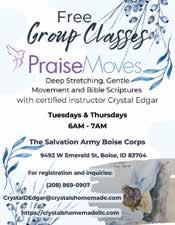



Why is there so much strife today? How is it that dearly-held friendships can so quickly unravel? Why does it seem like society is coming apart at the seams? One fitting answer to our collective unraveling is that we no longer perceive life in shared ways. Subsequently, long-established value systems have fallen apart. The institutions that form the skeletal structure for collective life have been invaded and re-programmed. The social glue that held relationships together for centuries has been bathed in a corrosive solvent of cynicism and suspicion. What used to be minor irritations are now major flashpoints. What can we Christians do?
For 15 years I taught a college theology class titled, “Developing a Christian Worldview.” The more I studied and analyzed contemporary American culture, the more I grew to realize that the issue of perception was, in significant ways, the root of societal dissolution. We no longer look at life in sweepingly shared ways. We no longer believe deeply-held things about the most important issues in life. And that’s true even across the varied church denominations. Again, one is shaken to one’s core: “What can I do?”
Well, we cannot give up. We cannot become weary in well doing (Gal. 6:9). We cannot despair. After all, we serve a faithful Lord who was, himself, faithful to the end. In both the light of Christ (our ultimate north-star orientation) and the darkness of our fractious era, I suggest an alternative approach to perceiving life: beauty.
Why beauty? Because beauty is a non-confrontive offer. Beauty never forces herself upon anyone. Beauty never coerces anyone to recognize her. Beauty always comes in peaceful, non-violent ways. Beauty is a gift, an invitation to union, a quiet space between power grabs, a loving offer. Beauty suggests that there is a something-more woven into life (both eternity and eternal qualities), but she never grabs anyone by the throat and forces them to acknowledge her. Given her own peaceful demeanor, is it any wonder, then, that she is so easily ignored, boxed up, and stored away in the basement by today’s violence and love-of-death?
Think with me: western culture, driven by cynicism, has taught itself to say, “Beauty is in the eye of the beholder.” In schools, the arts – modes of beauty – are always the first programs to face budget cuts. Beauty, together with her sisters goodness and truth, has been intentionally eliminated. And the craven spiritual logic for this elimination goes like this: if there are transcendent values that


abide across life, if there are qualities that are greater than the self, then they are threats. After all, if transcendents are greater than the self-as-king they must be destroyed! Abiding and transcendent values threaten the self as the ultimate standard. Transcendents threaten the whims and wiles of the heart. Goodness, truth, and beauty – the three classic transcendents – threaten the notion that “I” am the final arbiter for doing reality.
But for millennia hardly anyone believed beauty was a subjective fabrication. For centuries following Jesus western culture agreed that beauty is objectively real. When asked, “What is beauty?”, Aristotle pithily answered by saying, “That is a blind man’s question.” No right-minded person denied the existence of beauty.


There’s some macrocosmic, big-picture framing for you. What about microcosmic, real-life, twentyfirst century application? A couple, sure.
First, for Christians and our mission? We need to stop viewing people as evangelistic targets and start viewing them as human persons. The evangelical tendency is to see a non-believer and begin wondering how to witness to them in order to get them saved. Me? I’m all for sharing the gospel! But this is a matter of prioritization, not a binary all-or-nothing matter. If we looked at people as beings whom Jesus wants to heal, renew, and transform, instead of as notches on our soul-winning gun holsters, they would hear and perceive us differently. If we acted first toward relational ends instead of forcing some targeted goal, we would be experienced by others as more-authentic. This would be a subject-to-subject interaction instead of a superior-to-inferior transaction. We would be treating them as beautiful, in themselves.

For His part, Jesus treated everyone as having been created in the image of God. He never spoke down to anyone. Even when He was irritated or prophetic He never spoke or acted condescendingly. Fittingly, we could say that Jesus, out of His own beauty as the incarnate God, acted with beauty toward the beauty of others. This is remarkable: Jesus, even when He was rebuking someone, never dismissed people’s agency. He never talked to them like they were incapable. Never believed they were victimized beyond repair. Characterized by beauty, Jesus offered them the truth in beautiful fashion.

Second, beauty can help us to perceive and navigate life aware that there is always a somethingmore going on, there are invisible elements to life that go deeper. On this point, we ought to prefer quality over quantity. When choosing close friends? Quality over quantity. Pour into that treasured relationship like never before; such relationships are so rare! At Sunday church? Oh please, quality over quantity. At the supermarket? Quality over quantity. And believe me, because I tend toward being a penny-pincher, I am aware this is a matter of budgeting! I’m not urging fiscal irresponsibility. But across our lives it is true that quality is as important as quantity. Like my brother puts it, “Buy once, cry once.” Try to budget for the best instead of the merely sufficient.
Finally, because beauty doesn’t play by the rules of our strictly transactional culture, begin praying and asking the Lord where beauty is present if somewhat hidden. Look to find the good in a person or a situation. Treasure a word of truth that is spoken in a crowd of liars. God’s Holy Spirit can awaken you to the beauty that is woven through life, even if it is hard to perceive. n
Ed Rybarczyk, PhD, is both an ordained minister and a retired History of Theology professor. He now produces and hosts the Uncensored Unprofessor podcast @ uncensoredunprofessor.com. He can be reached at uncensoredunprofessor@gmail.com.




